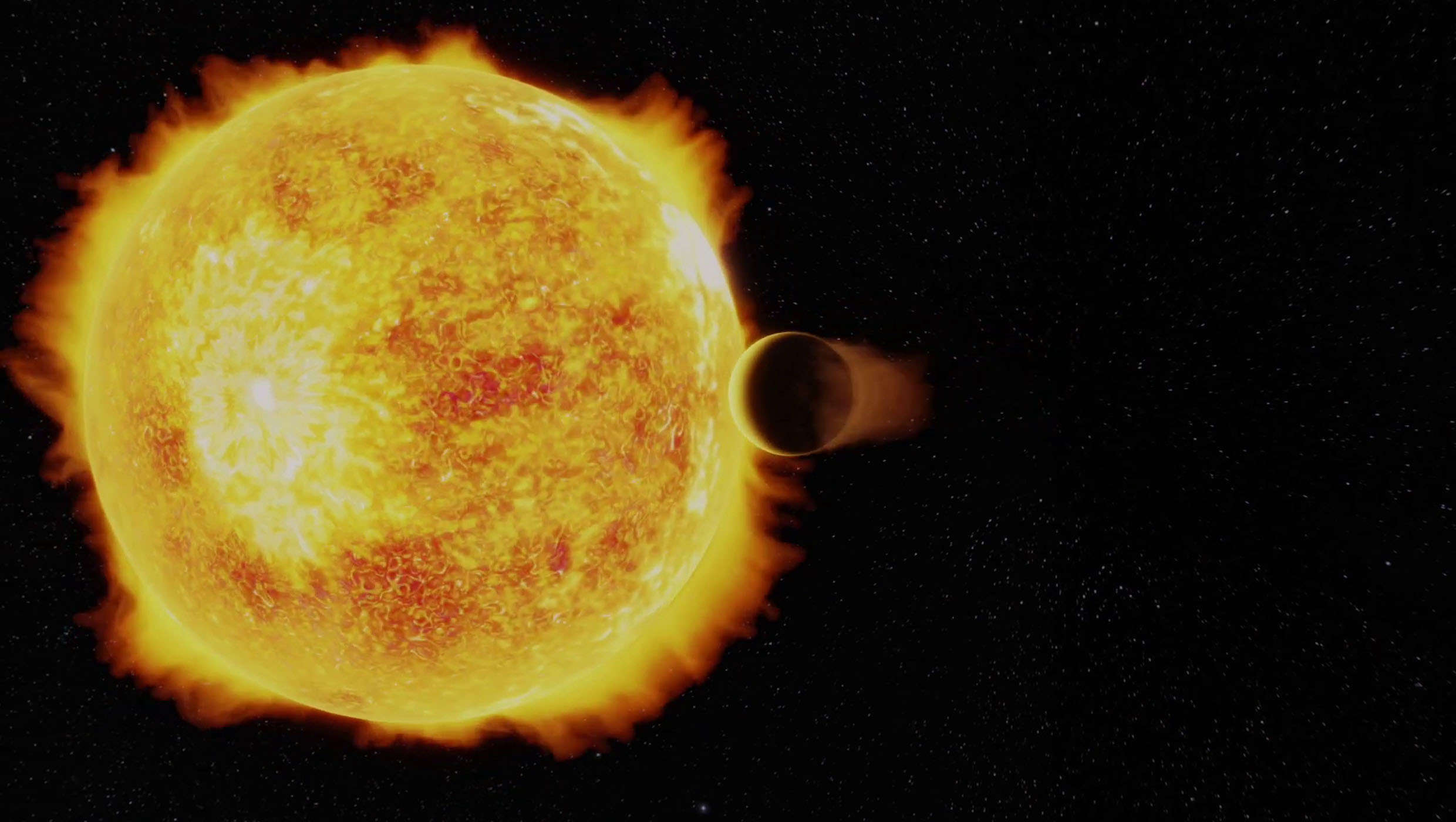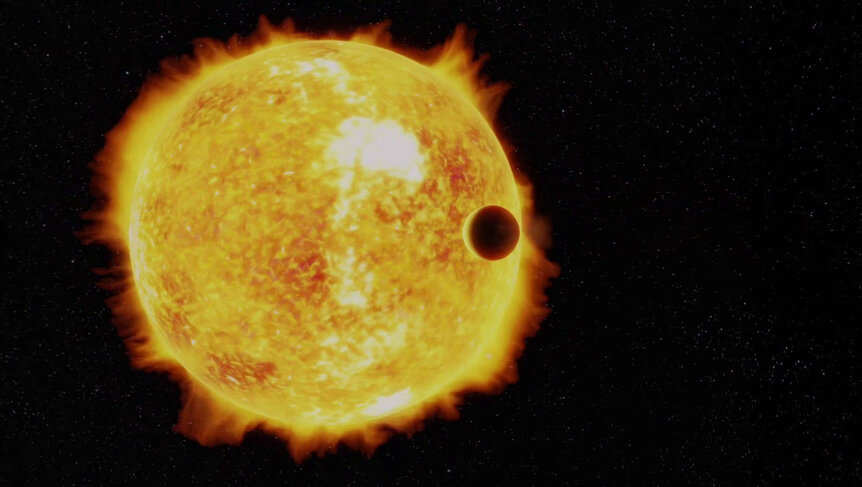Create a free profile to get unlimited access to exclusive videos, sweepstakes, and more!
Hot new type of exoplanet found blazing around its star

Super-Earths and hot Jupiters are nothing new, but just like so many other things floating around in the darkness, a scorching doppelganger of the ice giant Neptune was never thought to exist — until it did.
NASA’s TESS planet hunter hangs out up there because things like this tend to randomly show up in space. When it caught one particular object transiting the star LTT 9779, just 260 light-years away, no one actually expected it to be an entirely new species of exoplanet until astronomers took a closer look at the transit signal as observed the HARPS (High Accuracy Radial velocity Planet Searcher) instrument at ESO. HARPS was able to make out the planet’s mass and orbital characteristics, which indicated it was a massive version of Neptune. The weirdness only started there.
“This planet is very different from anything we have encountered before, since it orbits so close to its star, that it is sufficiently highly irradiated that it is very strange that it has any atmosphere at all,” astronomer James Jenkins, who led a study recently published in Nature Astronomy, told SYFY WIRE.
The massive orb now known as LTT 9779b is bizarre for many reasons. Neptune-type planets are so rare that there is an area called the Neptune Desert, where none were expected to be found at all until this one materialized. Not only did an exoplanet that no one knew of before show up in the last place it would have been ever expected to be found, but it is totally uncharacteristic of any planet that orbits as close to its star as it does. Its orbital period is less than four days, which Jenkins said are supposed to be either gas giants or super-Earths. It isn’t even supposed to have an atmosphere.
There is only one other known short-period Neptune, which was also discovered by Jenkins and his team earlier this year, but this one had been completely stripped of its atmosphere as a consequence of playing with fire by orbiting dangerously close to its star. So how can LTT977 b get away with venturing so near to a cosmic ball of fire hold on to enough atmosphere to make up around 10 percent of the planet’s total mass. This raises an enormous question mark about how a body like this could form and stay the way it is, but hardly the only question.
“We found this planet around a relatively bright star, meaning it allows us to study that atmosphere in detail from the ground and space, which means we should hear a lot more about this planet over the coming years,” said Jenkins. “It has a lot to teach us about these types of worlds, and Neptunes in general.”
How LTT 9779b ended up in the Neptune desert is still unknown, though Jenkins believes there are two likely ways. It might have reached its star system late in the system’s evolution, and ended up in an orbit so close to LTT 9779 when the star was past its first 100 million years of life and had significantly cooled down from that intense period, during which stars are more likely to devour planetary atmospheres. Most planets traverse the protoplanetary disc in which they formed within 10 million years. The discs in which they were born are usually dispersed by cosmic winds after that, but it is still possible that the hot Neptune made its way through the star system by elbowing and crashing into other planets.
Another way that LTT 9779b managed to keep some of its atmosphere could have been the result of the Roche Lobe Overflow (RLO) process. It might have been more enormous in the past, but pulled an Icarus and flew even close to the star than where it orbits now. The more powerful gravity of the star would have ravaged its atmosphere until much of it had vanished. However, if this is what happened, it would have ended with the planet refusing to give up and moving outward to prevent wasting angular momentum. Either way, radiation from the star is still putting it through photoevaporation. Its radiation is ionizing gas in the planet’s atmosphere which is then lost to space.
“In this scenario, the planet had to have been much larger in the past, something more like Jupiter, a gas giant, and there are lines of argument to support this,” Jenkins explained. “In the end, we need more observations and better models to explain the existence of this planet.”
So how long will this planet manage to keep its atmosphere? The reason there even is a Neptune desert is because planets like Neptune that orbit so close to their stars lose all or nearly all of their atmospheres until they end up as bare rocks. Somehow, LTT 9779b managed to escape this fate and will for a while until photoevaporation finally eats away the last of its atmosphere.
“It does seem likely that the fate of this planet is to lose its atmosphere,” said Jenkins. “The mass loss rates that we expect, would argue that the planet will lose its atmosphere through photoevaporation in less than a few billion years. So even without RLO occurring, we can expect LTT9779b to end up a bare rock at some point before the star dies.”
This is what you get for playing with fire.















